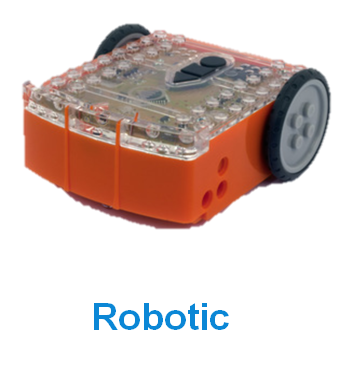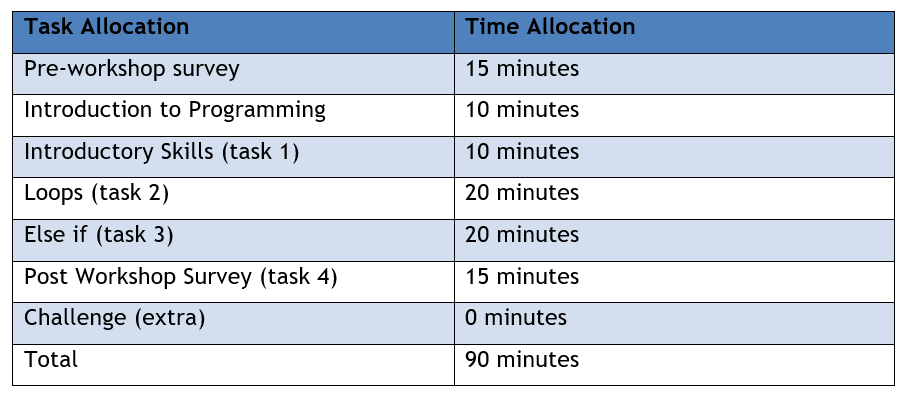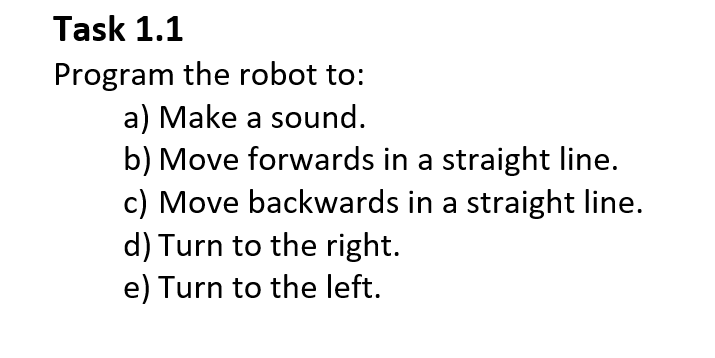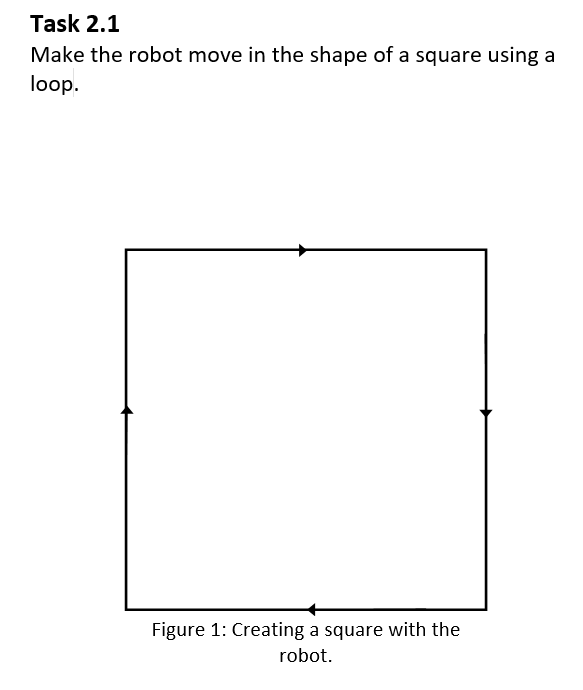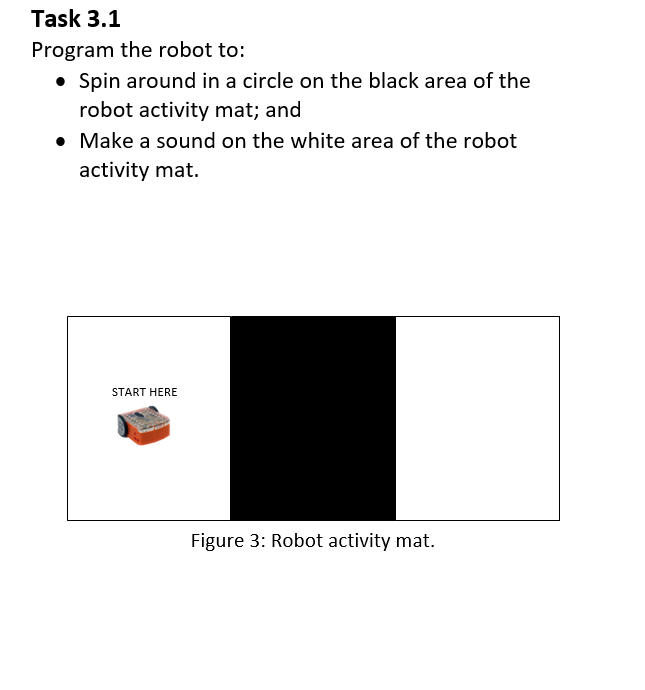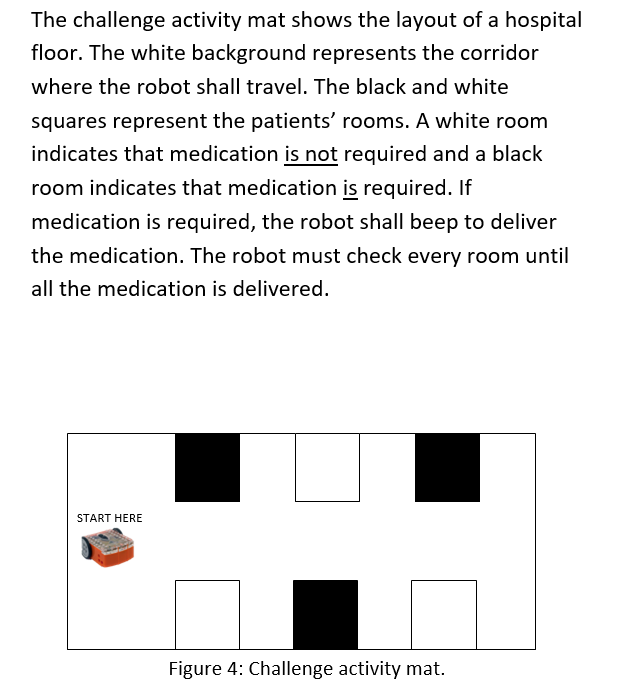Projects:2016s1-128 Evaluating Programming Languages for Educational Robotics Kits
Contents
Project Title
Evaluating Programming Languages for Educational Robotics Kits.
Project Members
- Patrick Cobiac
- Elizabeth Tait
Supervisor
- Braden Phillips
Introduction
The use of robotics and programming as part of the school curriculum encourages student participation in Science, Technology, Engineering and Mathematics (STEM) related subjects [1]. The purpose of the project was to gain a better understanding of this theme by specifically investigating the teaching of programming language concepts to students with and without the use of robotics.
Aim
The project aims to determine the effectiveness of teaching programming language concepts to students with and without the use of robotics. In particular the project aims to compare robotic and non-robotic tools in terms of students ability to learn computer programming concepts, the speed at which they learn these skills, the effective on they have STEM and problems students have with these tools. The project aims to show that teachers do have the appropriate skills to successfully teach programming skills and find their preferred tool.
Motivation
The motivating factor for this project is to increase participation in STEM related subjects and fields. It is important to increase participation as 75% of the fastest growing jobs in Australia require STEM skills [1]. A study by Kennedy, J, Lyons, T and Quinn, F has found that Australian student participation in STEM subjects in their final year of high school has decreased [2]. The study analysed data from student enrolments into final year subjects from 1992 to 2012 and identified that although enrolment increased by 18% there was a decline in enrolments into chemistry (-5%), physics (-7%), multidisciplinary science (-5%), intermediate mathematics (-11%) and advanced mathematics (-7%) proportionally of each year [2]. These declines have been suggested to come from the additional curriculum offerings such as vocational courses [2]. Another suggestion is that universities have reduced pre-requisites for courses and students’ choosing subjects to optimise their final year score [2]. It also should be noted that over this period there has been a reduction in the number of subjects required to be completed by students in their final year [2].
The final motivating factor is the lack of women in engineering; out of the total Australian engineering workforce only 16-18% are women [3]. The percentage of Australian female students enrolled into advance and intermediate mathematics is significantly lower than males; 6.7% to 12% and 17.6% to 20.7% respectively [6]. An Australian survey at an engineering seminar by Briody, Felicity; Goh, Steven and Dawes, Les asking year 8/9 high school females “What were your perceptions of engineering before today?” identified the following responses [7]:
• That only girls who did very well at science opted for engineering careers [perception before]
• Men building bridges
• My original perceptions were that engineering was mostly mechanically based, I have since been further educated
• Lots of electronics [before] A wide variety of technological opportunities [after]
• My perception on engineering has changed, I never realised how many different types of engineering
• My perceptions of engineering were that it was just related in terms of buildings and bridges and now I've learnt that there are many types of engineering like medical and others
• Now I realise that engineering is part of everyday life
• Before today, engineering was just another career path that I wasn’t very interested in. However, my perception has changed after today as I have learned how engineering can help to change the
This illustrates how important it is to promote STEM in schools and to potentially find a way for students to become more interested in STEM. The benefit is not only to students, schools and companies invested in educational programing equipment, but to Australia as students will be able to fulfill the jobs required in ICT and engineering.
Method
The project compared non-robotics and robotic to determine whether educational robotics kits were more successful tools in teaching students programming.
A total of 27 workshops were conducted at 10 public and private secondary schools across the Adelaide metropolitan region to provide over 350 Year 8/9 students with the opportunity to learn STEM, robotics and programming.
The robotics and non-robotics tools are visual based programming languages that use drag and drop blocks to make programming easy for students to learn
Workshops
In each workshop, students completed three tasks and pre/post surveys. The tasks were aimed at teaching students two key programming language concepts: loops and else/if statements.The workshops were 90-minutes in length.
Task 1: Introduced students to Edison or Scratch.
Task 2: Taught students how to use and implement loops.
Task 3: Taught students how to use and implement if/else logic.
Challenge Task: Increased complexity for competent students. Uses both loops and if/else logic
Results
Key findings
1 Students completed more programming tasks in the non-robotics based workshops.
2
3
4
Key Observations
Several other factors that affected students’ levels of enjoyment of the programming workshop included:
• The use of the laptop touchpad.
• The type of computer provided for the workshop.
• The lack of comprehensive instructions.
• The size of the group.
References
1] A. Khanlari, "Effects of educational robots on learning STEM and on students’ attitude toward STEM," in 2013 IEEE 5th Conference on Engineering Education (ICEED), Institute of Electrical and Electronics Engineers (IEEE), 2013, pp. 62–66.
[3] K. Becker and K. Park, "Effects of integrative approaches among science, technology, engineering, and mathematics (STEM) subjects on students’ learning: A preliminary meta-analysis," Journal of STEM Education: Innovations & Research, vol. 12, no. 5 & 6, pp. 23–37, 2011.
[2] J. Kennedy, T. Lyons, and F. Quinn, "The Continuous Decline of Science and Mathematics Enrolments in Australian High Schools," Teaching Science: The Journal of the Australian Science Teachers Association, vol. 60, no. 2, pp. 34–46, Jun. 2014.
[4] R. Ronald, D. S. Bloom, J. Carpinelli, L. Burr-Alexander, L. S. Hirsch, and H. Kimmel, "Advancing the ‘E’ in K-12 STEM education," The Journal of Technology Studies, vol. 36, no. 1, pp. 53–64, 2010.

